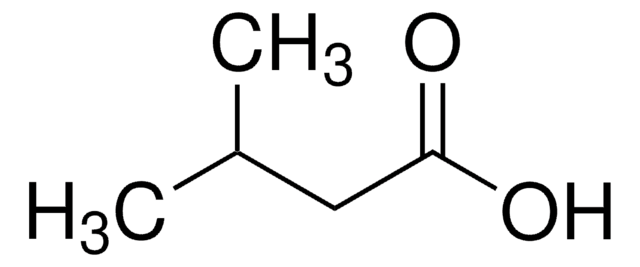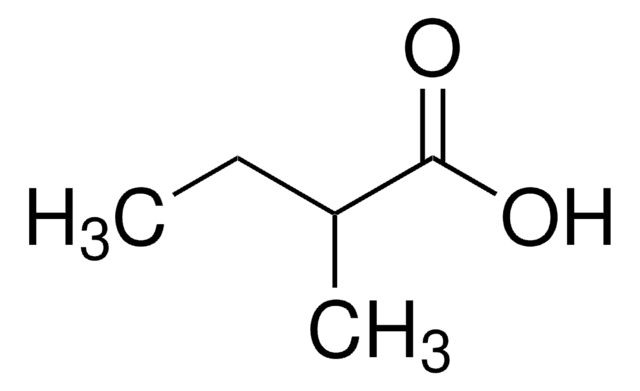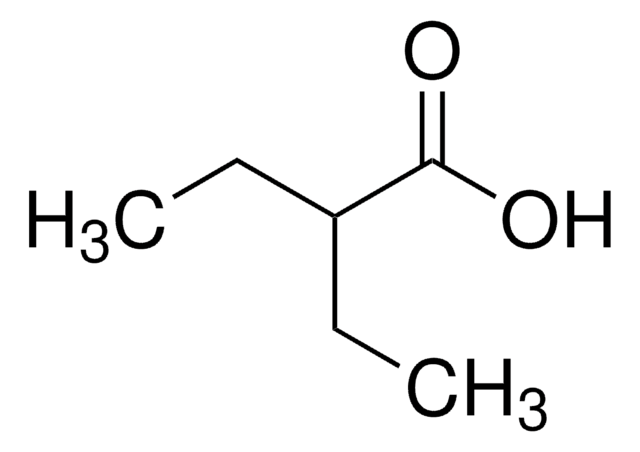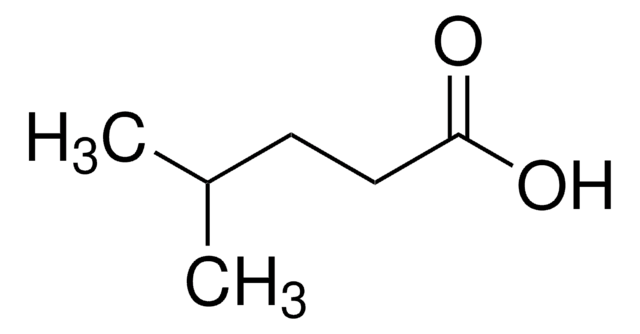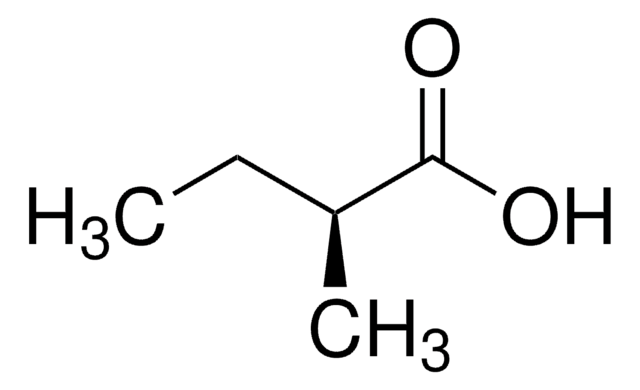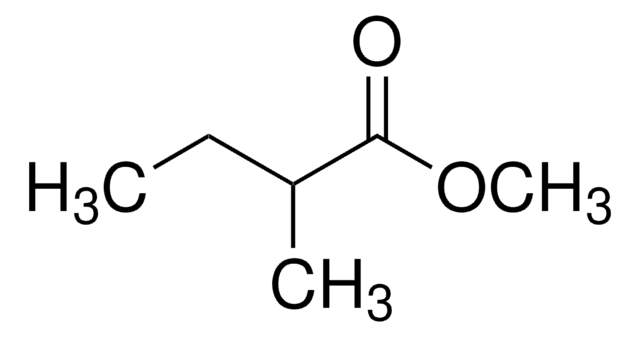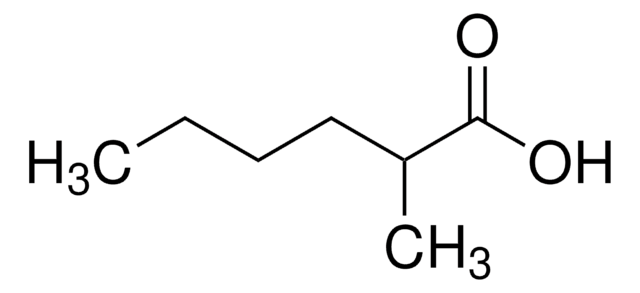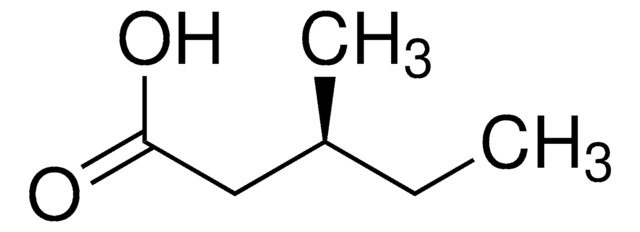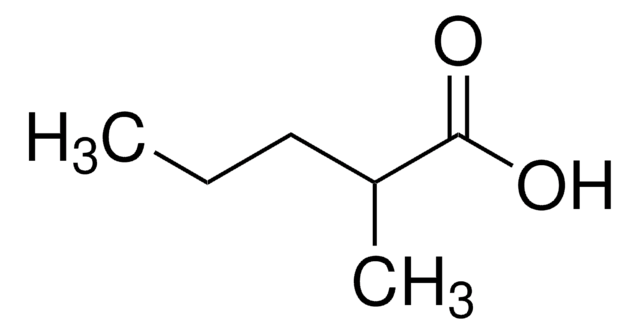193070
2-Methylbutyric acid
98%
Sinónimos:
NSC 7304
About This Item
Productos recomendados
vapor pressure
0.5 mmHg ( 20 °C)
Quality Level
assay
98%
form
liquid
refractive index
n20/D 1.405 (lit.)
bp
176-177 °C (lit.)
density
0.936 g/mL at 25 °C (lit.)
functional group
carboxylic acid
SMILES string
CCC(C)C(O)=O
InChI
1S/C5H10O2/c1-3-4(2)5(6)7/h4H,3H2,1-2H3,(H,6,7)
InChI key
WLAMNBDJUVNPJU-UHFFFAOYSA-N
¿Está buscando productos similares? Visita Guía de comparación de productos
Categorías relacionadas
General description
Enantioselective esterification of (+/-)-2-methylbutynic acid catalyzed by Chromobacterium viscosum lipase immobilized in microemulsion-based organogels has been investigated.
Application
signalword
Danger
hcodes
Hazard Classifications
Acute Tox. 4 Dermal - Acute Tox. 4 Oral - Eye Dam. 1 - Met. Corr. 1 - Skin Corr. 1B
Storage Class
8A - Combustible corrosive hazardous materials
wgk_germany
WGK 1
flash_point_f
170.6 °F - closed cup
flash_point_c
77 °C - closed cup
ppe
Faceshields, Gloves, Goggles, type ABEK (EN14387) respirator filter
Elija entre una de las versiones más recientes:
¿Ya tiene este producto?
Encuentre la documentación para los productos que ha comprado recientemente en la Biblioteca de documentos.
Los clientes también vieron
Nuestro equipo de científicos tiene experiencia en todas las áreas de investigación: Ciencias de la vida, Ciencia de los materiales, Síntesis química, Cromatografía, Analítica y muchas otras.
Póngase en contacto con el Servicio técnico